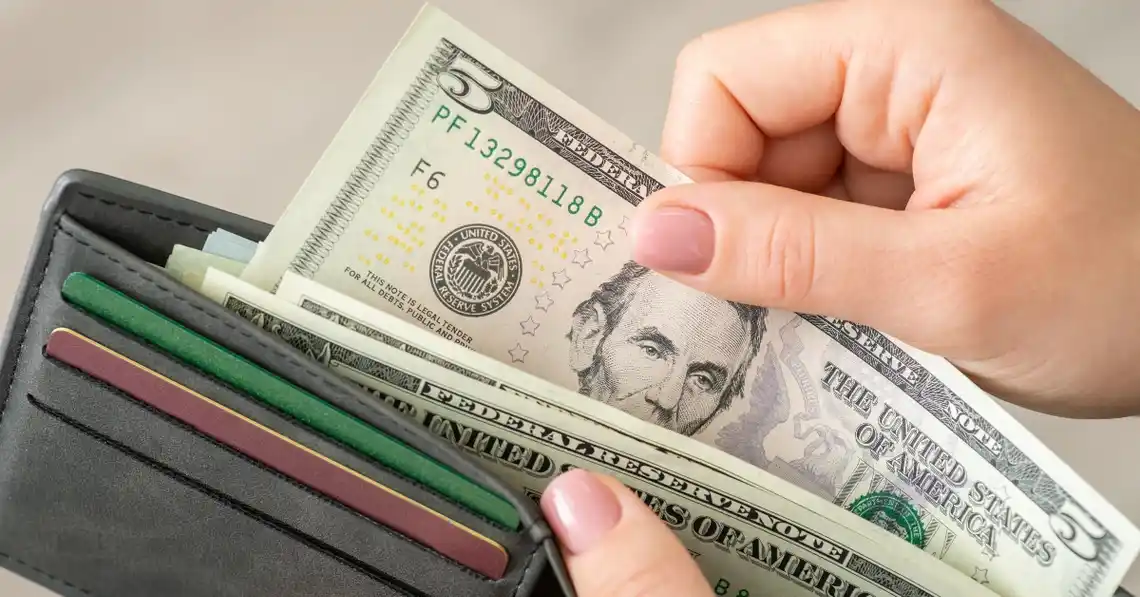Signs Your $5 Bill Check Your $5 Bills Most people think of a $5 bill well, just five bucks. But in the fascinating world of currency collecting, certain $5 bills can be worth much more than their face value. Unique features, printing errors, rare serial numbers, or historical significance can turn an ordinary bill into a collector’s dream.
Here are 10 ways to tell if your $5 bill might be worth far more than $5 — and how to spot these treasures in your wallet.
1. Your Bill Has a Patterned Serial Number Check Your $5 Bills
Collectors love serial numbers that look unusual or visually appealing.
Some examples include:
-
Solid serial numbers: All digits are the same, like
55555555— can sell for thousands of dollars. -
Repeating numbers: Such as
45454545. -
Palindrome numbers: Read the same forward and backward, like
12344321.
For example, a binary radar repeater palindrome from 2006 sold for $110 on eBay.
2. Your Bill Has a Low Serial Number Signs Your $5 Bill
A note with a serial number like 00000001 or even under 00000100 is highly sought after.
Collectors pay more for these because they were among the first printed in their series. Depending on condition, low serial number $5 bills can sell for $10 to $300 or more.
3. There’s a Printing Error or Mistake
Printing mistakes make bills rare — and rare means valuable.
Common errors include:
-
Missing ink in certain areas.
-
Misaligned printing.
-
Double printing.
One 1988 $5 bill missing an ink mark on the back sold for $4,000. Since error notes are usually destroyed during production, surviving examples are highly collectible.
4. There’s a Star Next to the Serial Number
Star notes are replacement bills printed when an error is found during production.
They’re easy to spot — just look for a small star before or after the serial number.
A rare 2017A star note in circulated condition has been listed for $1,200, though common ones sell for $20–$30.
5. Your Bill Is from an Older Series
Notes from decades ago, especially from the 1950s and 1960s, are collectible — especially if they have unique serial numbers or are in excellent condition.
Example: A 1950A $5 bill with a low serial number sold for $425.
6. It’s a Special or Commemorative Edition
Some bills are released to mark special events or anniversaries. These designs are often printed in smaller quantities, making them more desirable to collectors.
7. Issued by a Rare or Defunct Bank
Older $5 bills issued by small banks or institutions that no longer exist can fetch high prices.
For instance, a 1929 $5 bill from the First National Bank of Aransas Pass, Texas, sold for $3,360.
8. You Found an 1890 Treasury Note
These large-size bills have ornate green designs on the back and are extremely rare.
Only 14 are known to exist today, with past sales reaching $282,000.
9. You Own an 1861 Demand Note
Demand notes were America’s first paper money, issued during the Civil War.
They were only in circulation from August 1861 to August 1862 and could be exchanged for gold at the time.
Some have sold for $81,000 to $138,000 at auction.
10. You Have a 1934 Silver Certificate or Federal Reserve Note
In 1934, $5 bills got a design update and size change.
Special issues like the Hawaiian version with a brown seal can sell for up to $6,000, while the North African yellow seal version can bring $1,850.
Final Thoughts
While most $5 bills are worth exactly $5, certain unique features can make them worth hundreds — or even thousands — to collectors. Always check your bills before spending them, and if you spot something unusual, research it or consult a currency expert. You might just be holding a hidden treasure.
Frequently Asked Questions
Q1: How can I check if my $5 bill is valuable?
Look for unique serial numbers, star notes, printing errors, older series dates, or special seals.
Q2: Are star notes always valuable?
Not always. Common star notes may only be worth a few dollars over face value, but rare ones can fetch hundreds.
Q3: Do worn bills lose collector value?
Yes. Condition matters — crisp, uncirculated notes are worth more than damaged or heavily circulated ones.
Q4: Where can I sell a rare $5 bill?
You can sell through coin and currency dealers, auction houses, or online marketplaces like eBay.
Q5: Can modern $5 bills be valuable?
Yes, if they have rare serial numbers, printing errors, or star replacements from low print runs.
